at operating temperature TJ
= 25°C, VIN = VOUT(NOM) + 0.5V, IOUT = 1mA,
VEN = VIN, and CIN = COUT = 1μF
(unless otherwise noted)
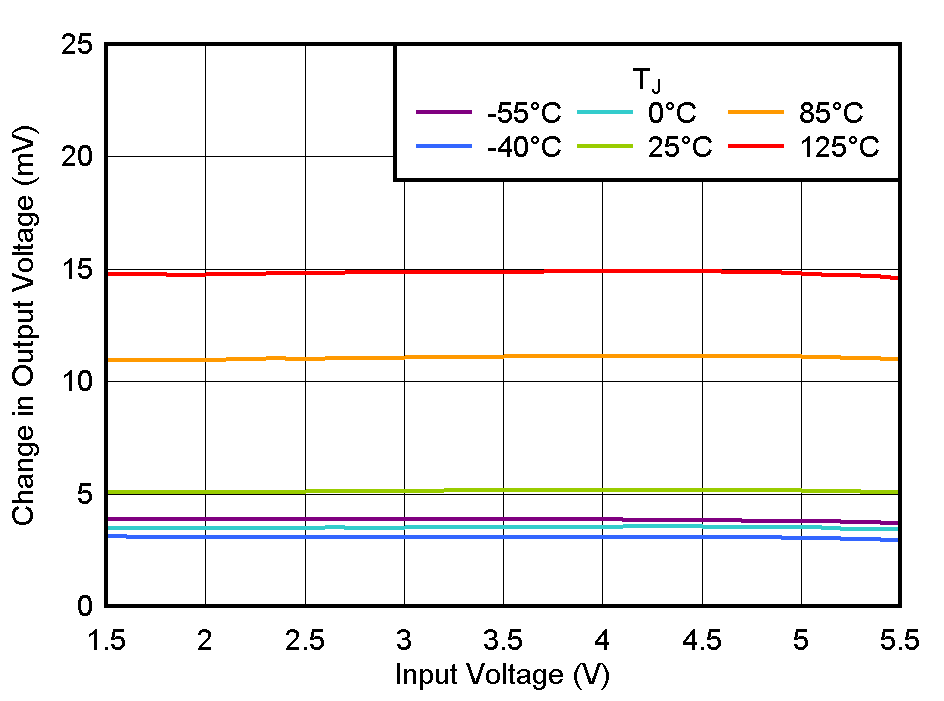 Figure 5-1 Line Regulation vs VIN
Figure 5-1 Line Regulation vs VIN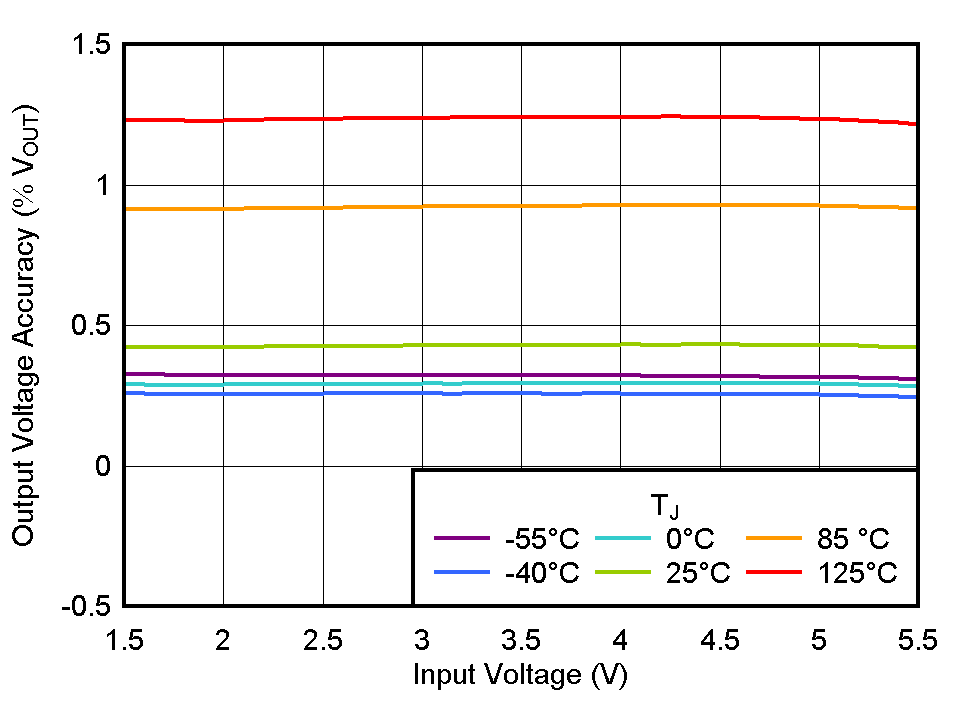 Figure 5-3 Output Voltage Accuracy vs VIN
Figure 5-3 Output Voltage Accuracy vs VIN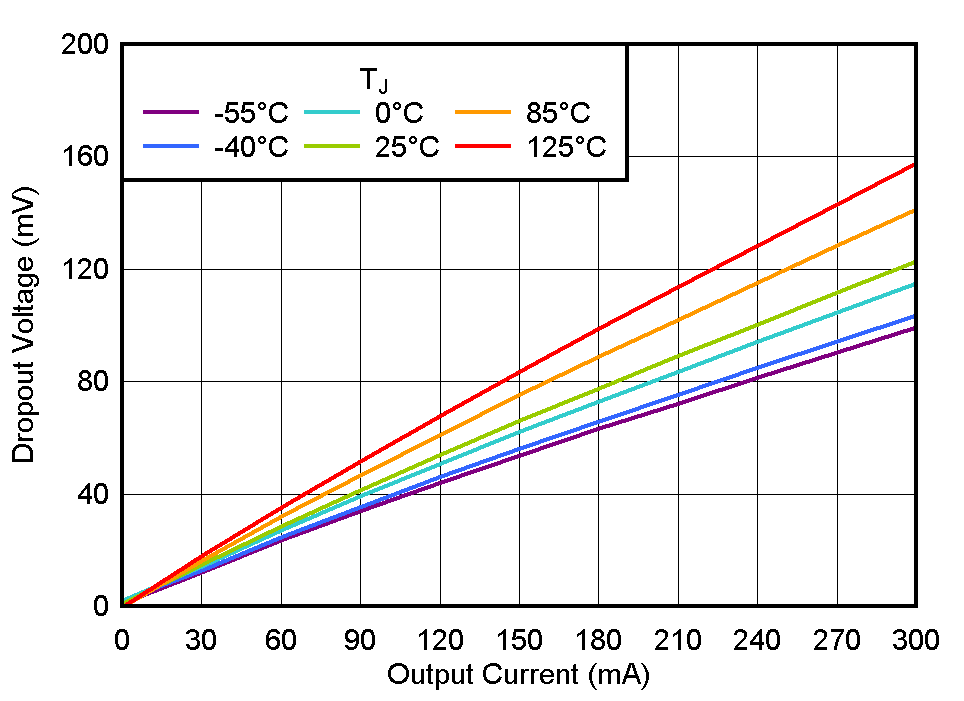
| VOUT = 3.3V, Test
condition: VIN = VOUT(NOM) |
Figure 5-5 Dropout Voltage vs IOUT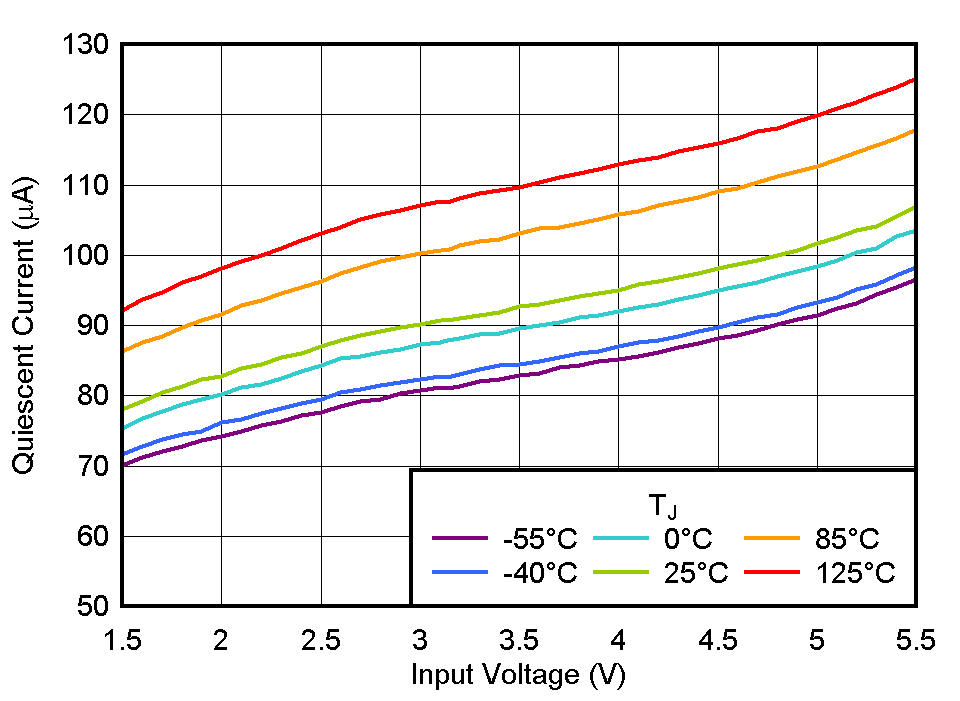 Figure 5-7 Quiescent Current vs VIN
Figure 5-7 Quiescent Current vs VIN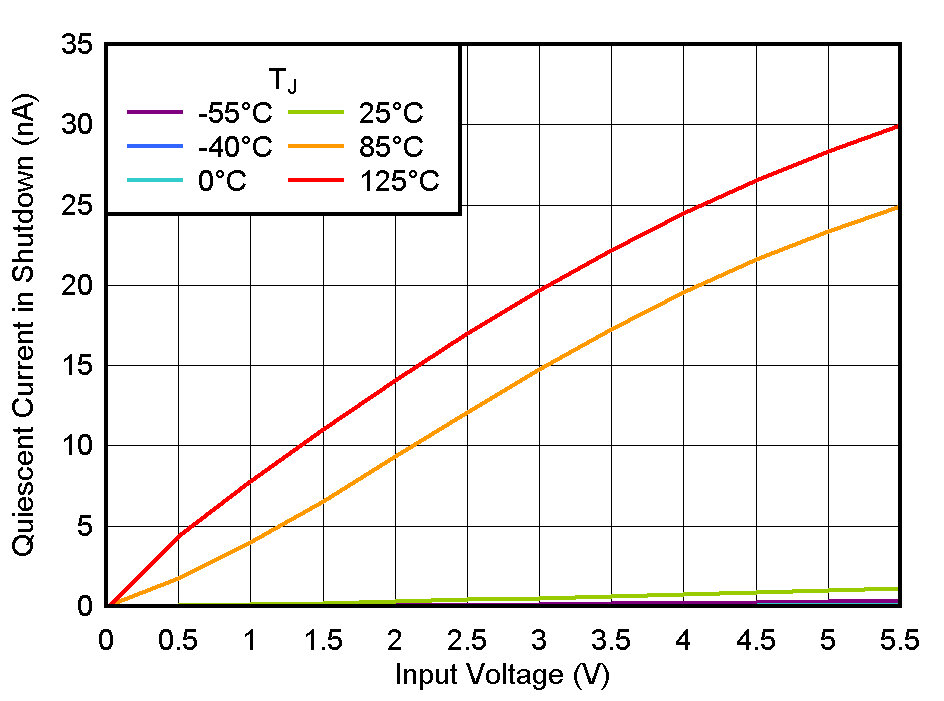 Figure 5-9 Shutdown Current vs VIN
Figure 5-9 Shutdown Current vs VIN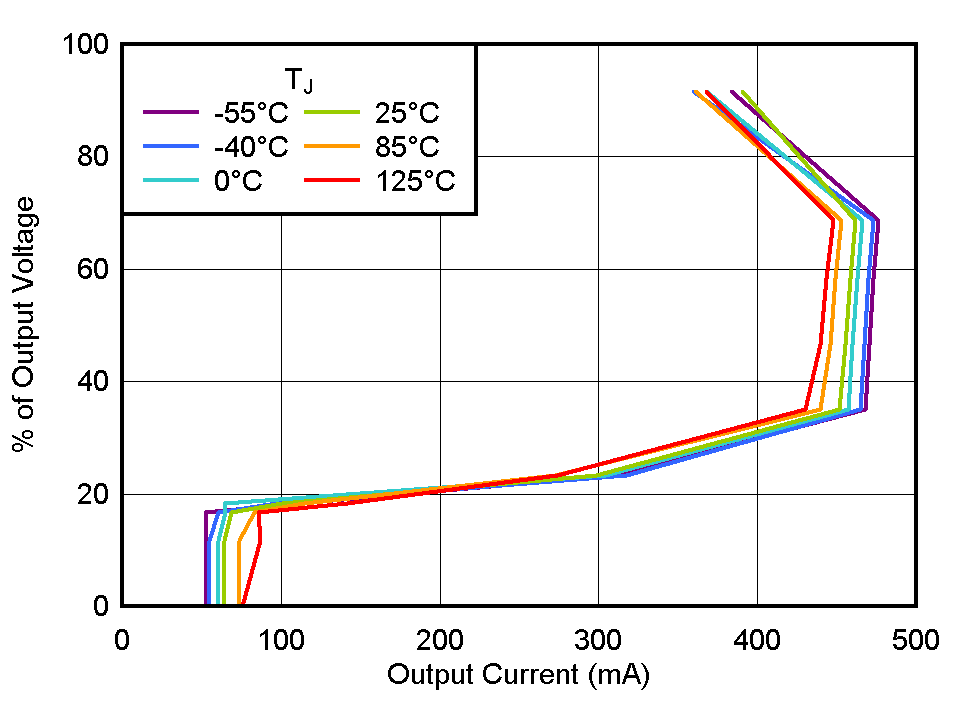 Figure 5-11 Current Limit
Figure 5-11 Current Limit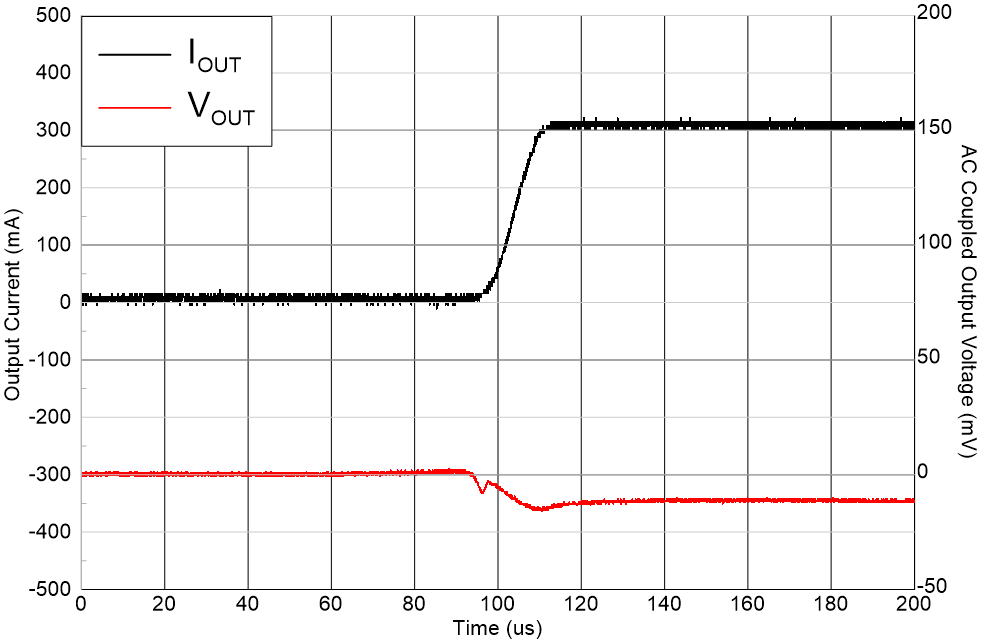
VIN = VOUT(nom)
+ 1.0V, IOUT = 0mA to 300mA,
TRISING =
10µs |
Figure 5-13 Load
Transient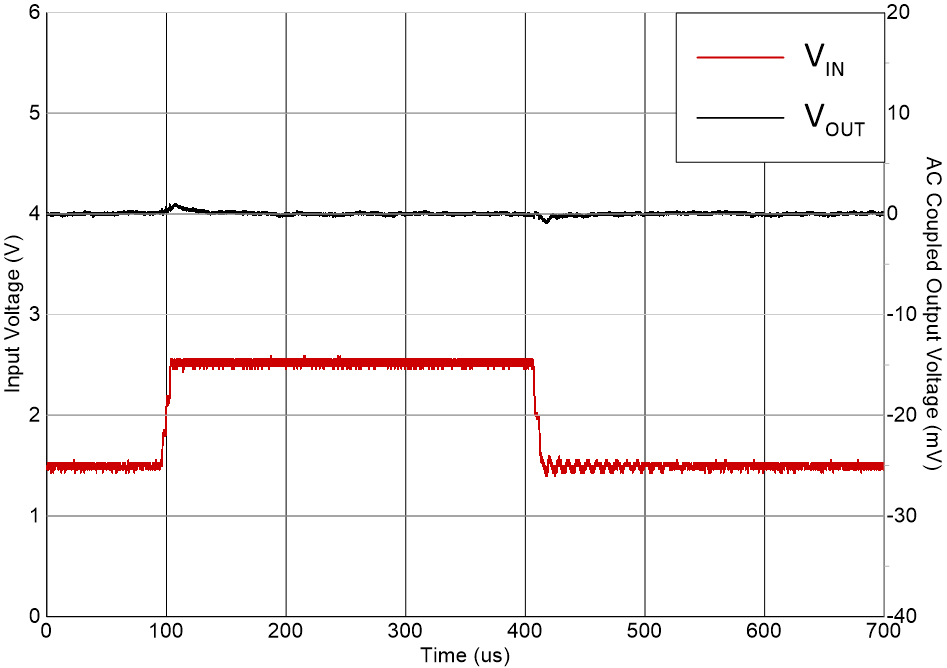
| VIN = VOUT +
0.3V to VOUT +1.3V |
Figure 5-15 Line
Transient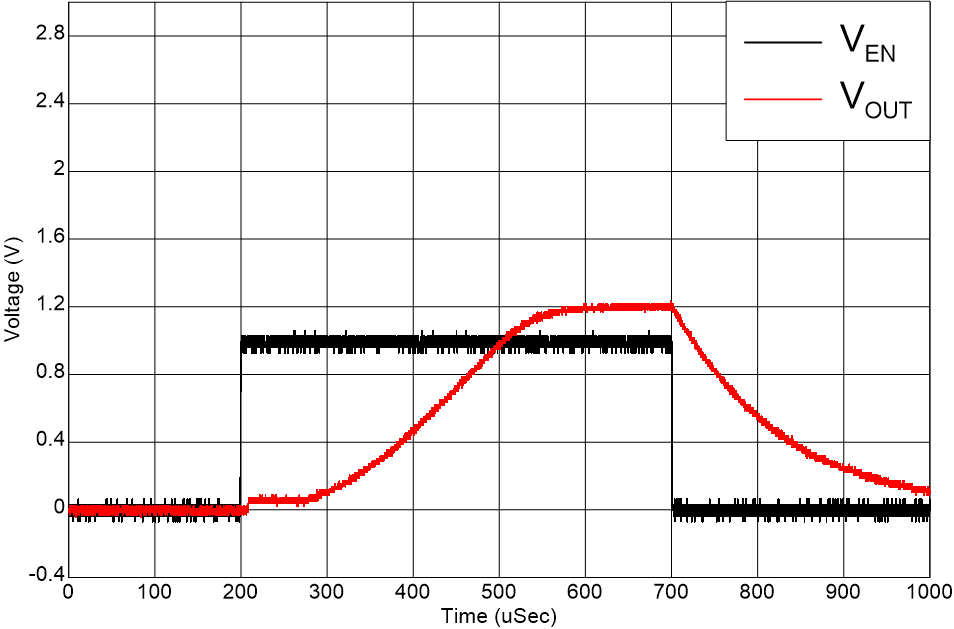 Figure 5-17 Start-Up
Figure 5-17 Start-Up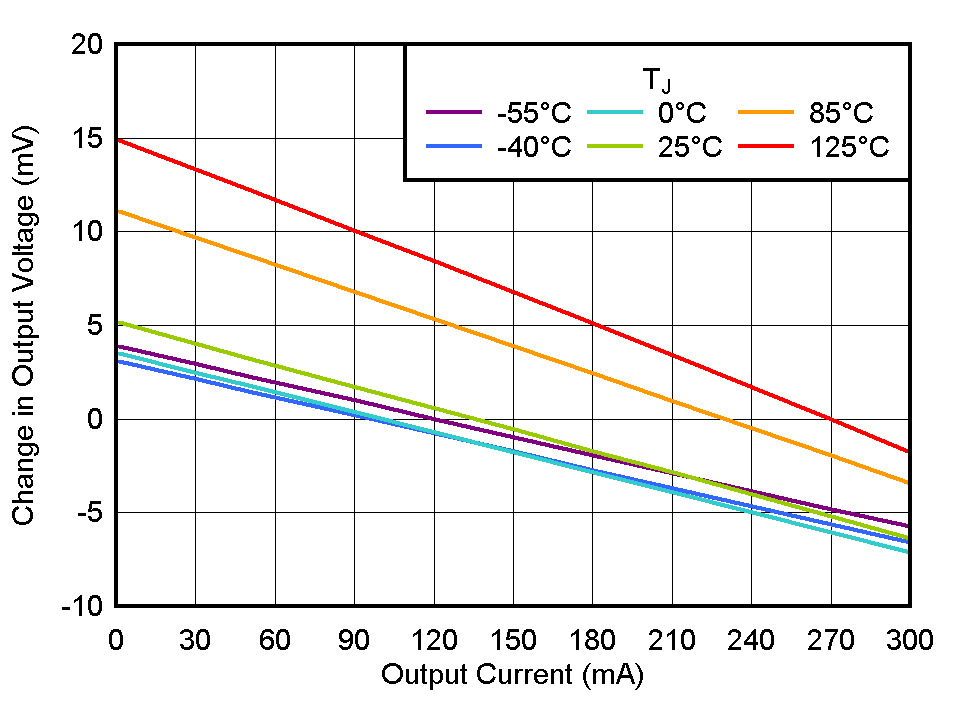 Figure 5-2 Load
Regulation vs IOUT
Figure 5-2 Load
Regulation vs IOUT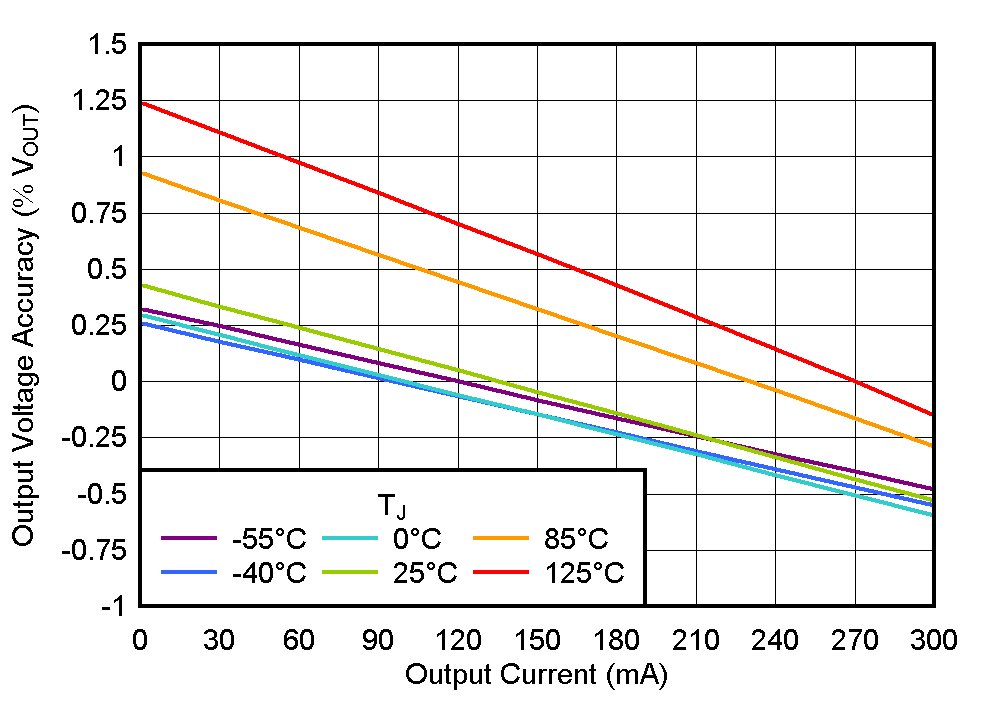 Figure 5-4 Output Voltage Accuracy vs IOUT
Figure 5-4 Output Voltage Accuracy vs IOUT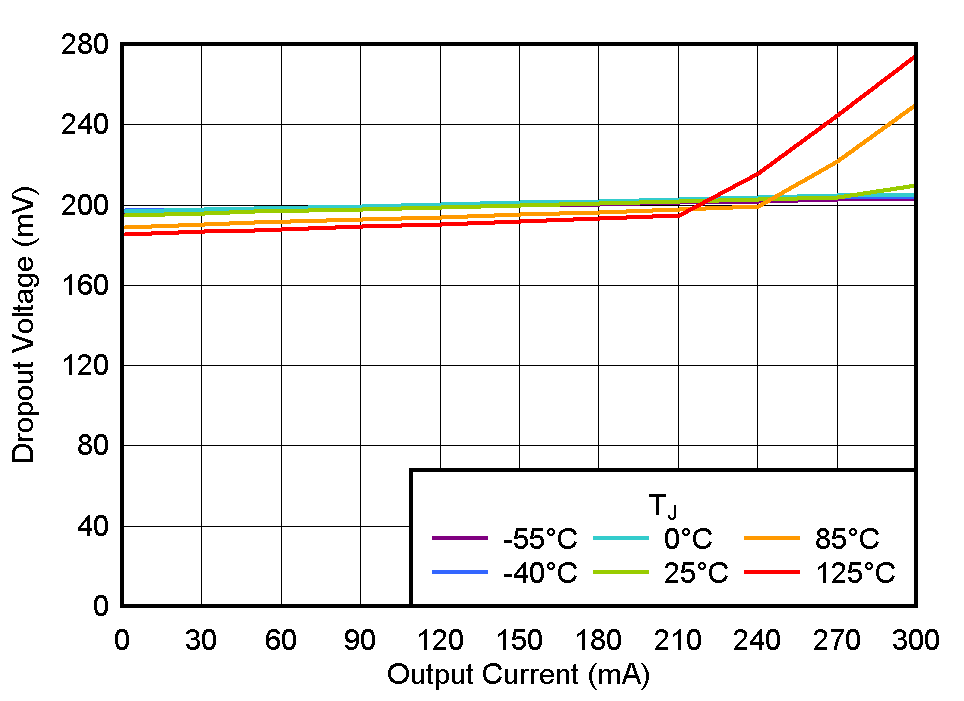
| VOUT = 1.2V, Test
condition: VIN = 1.4V |
Figure 5-6 Dropout Voltage vs IOUT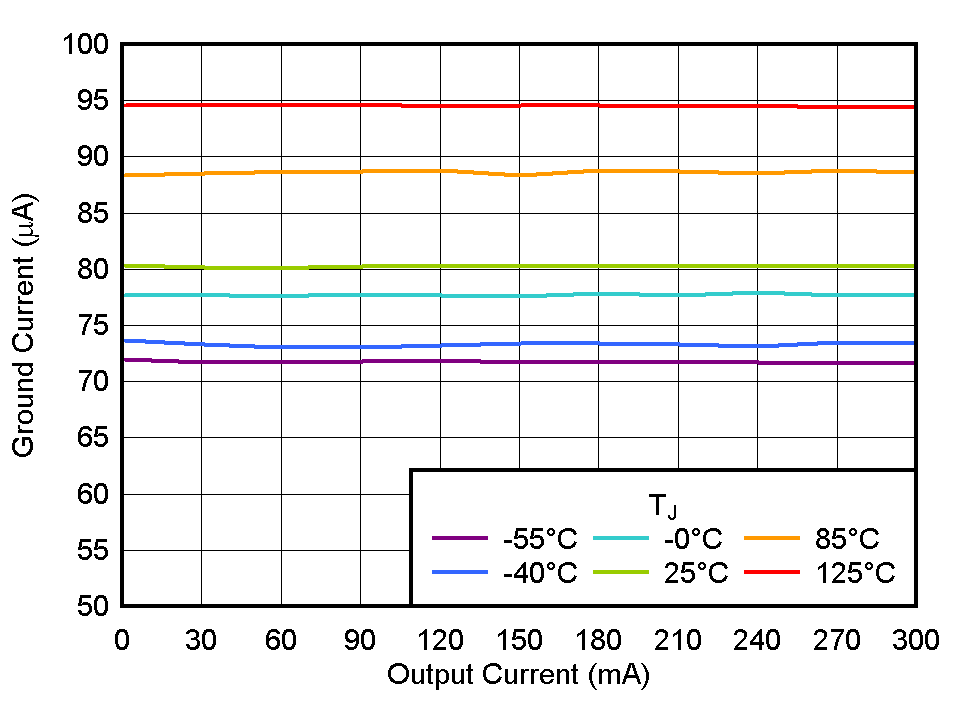 Figure 5-8 Ground Current vs IOUT
Figure 5-8 Ground Current vs IOUT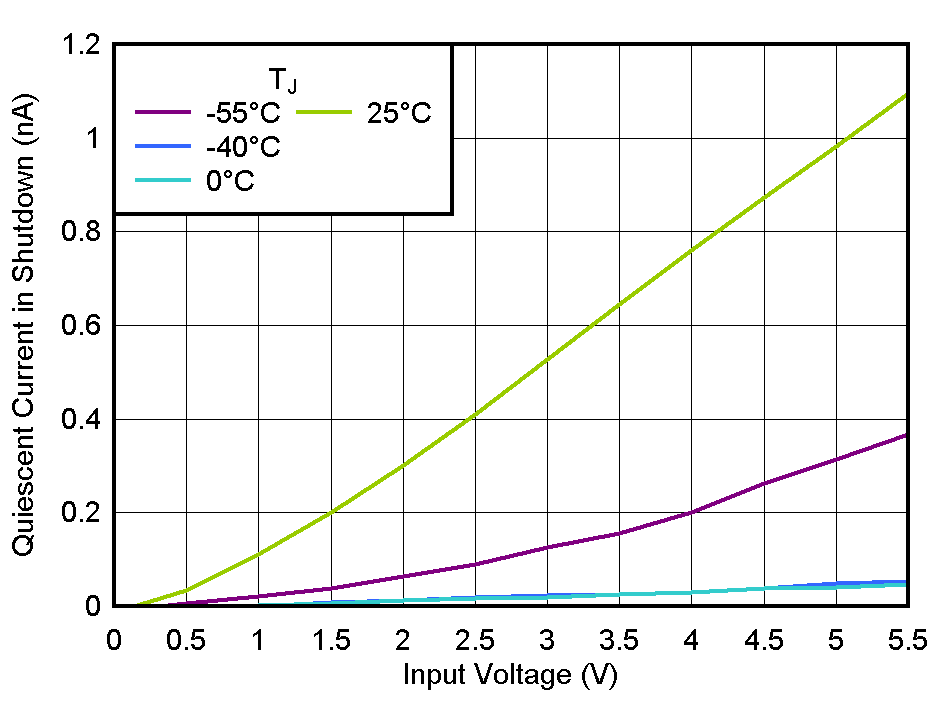 Figure 5-10 Shutdown Current vs VIN
Figure 5-10 Shutdown Current vs VIN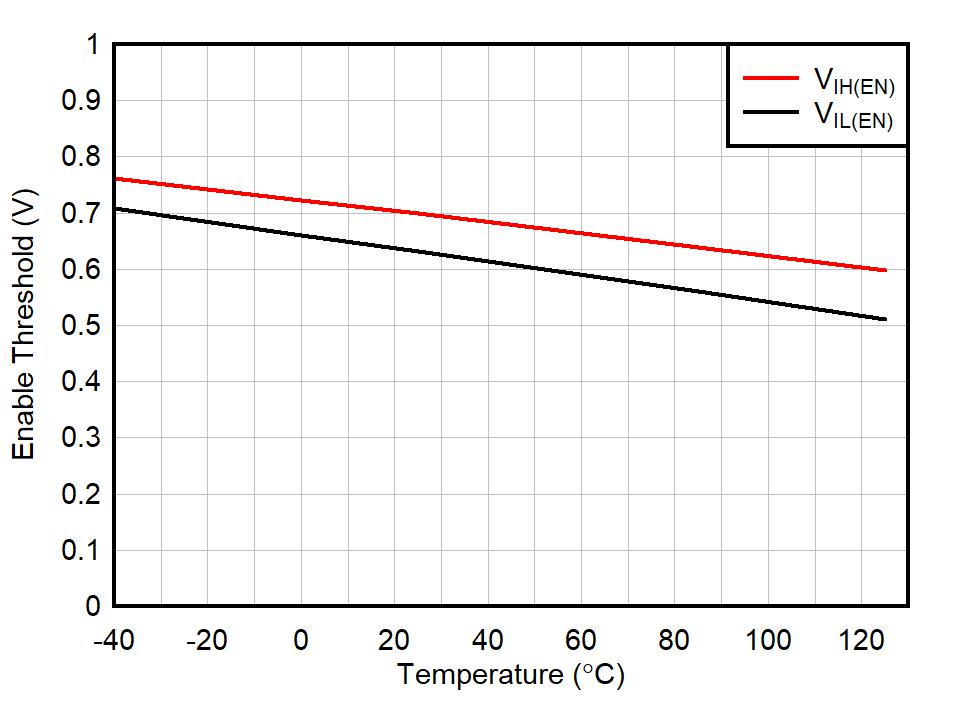 Figure 5-12 Enable Logic Threshold vs Temperature
Figure 5-12 Enable Logic Threshold vs Temperature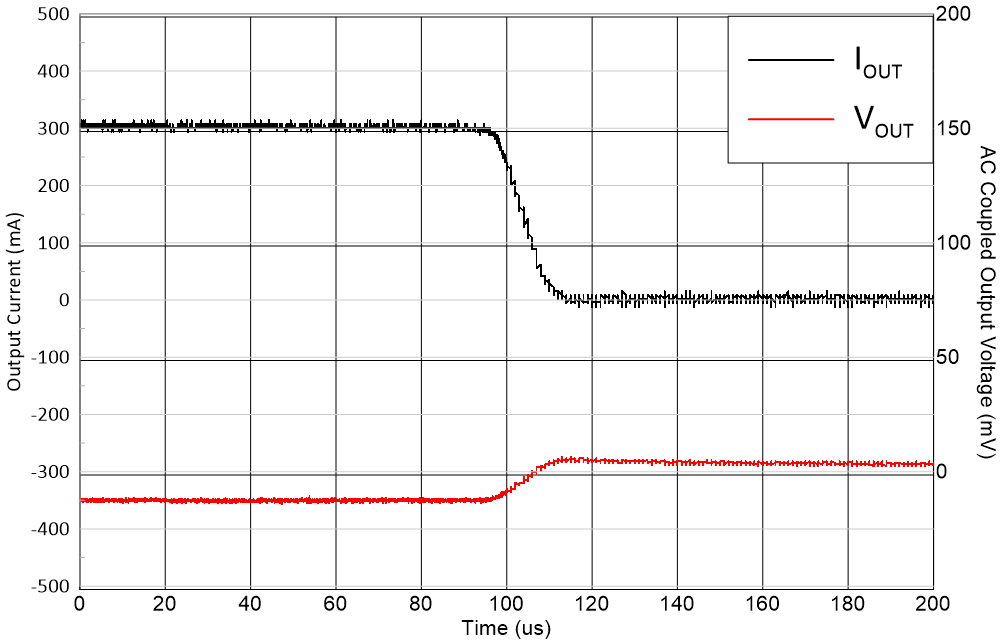
VIN = VOUT(nom)
+ 1.0V, IOUT = 300mA to 0mA,
TFALLING =
10µs |
Figure 5-14 Load
Transient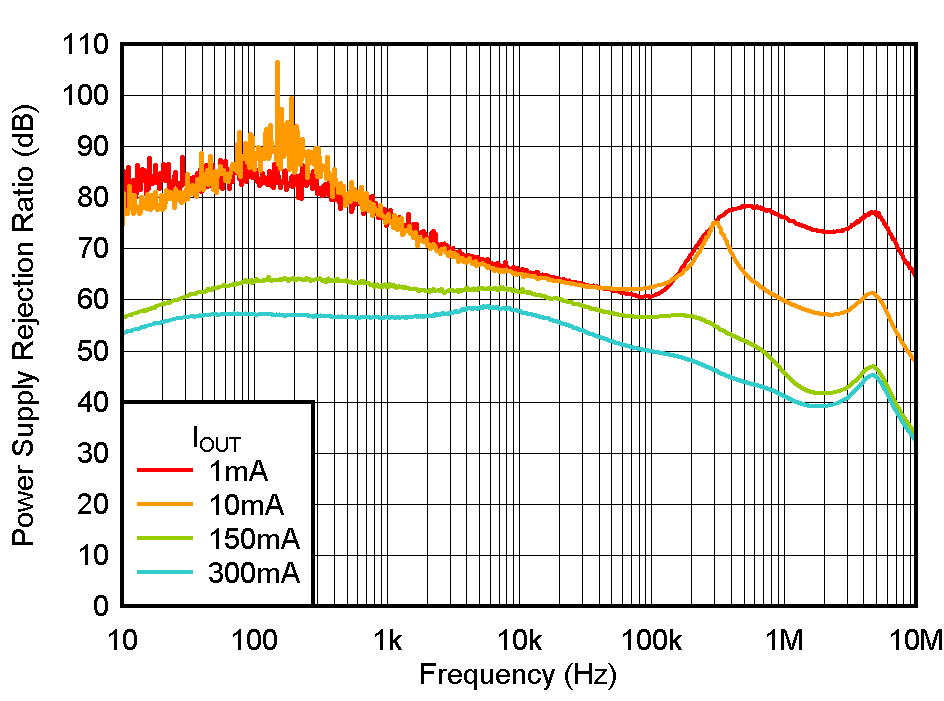 Figure 5-16 PSRR
vs Frequency
Figure 5-16 PSRR
vs Frequency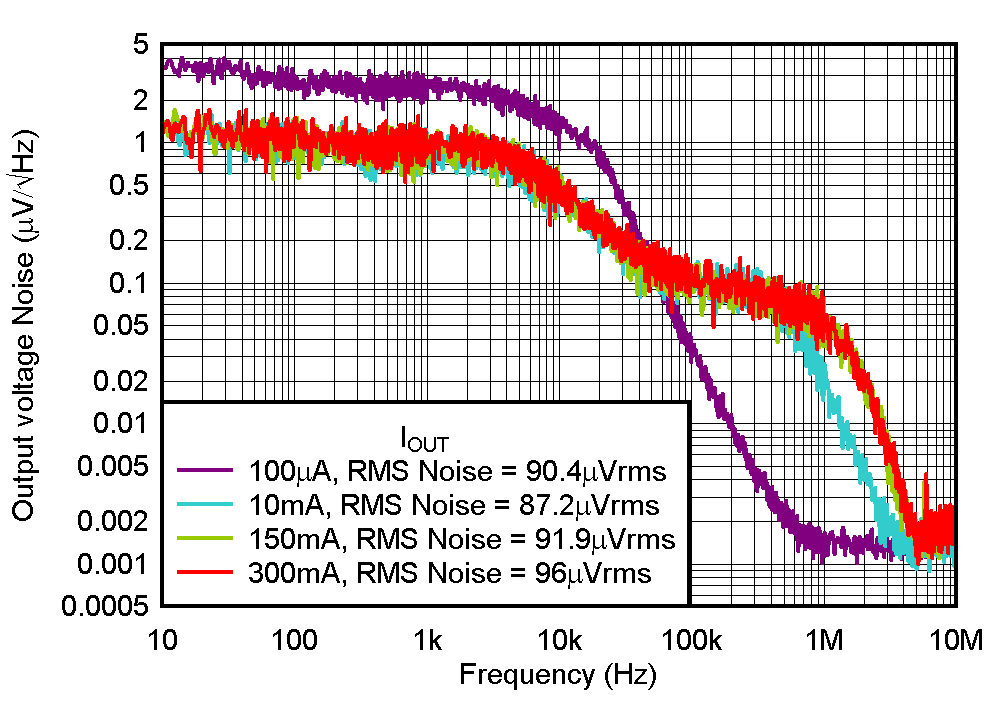
| VOUT = 1.2V, RMS Noise BW =
10Hz to 100kHz |
Figure 5-18 Noise

















